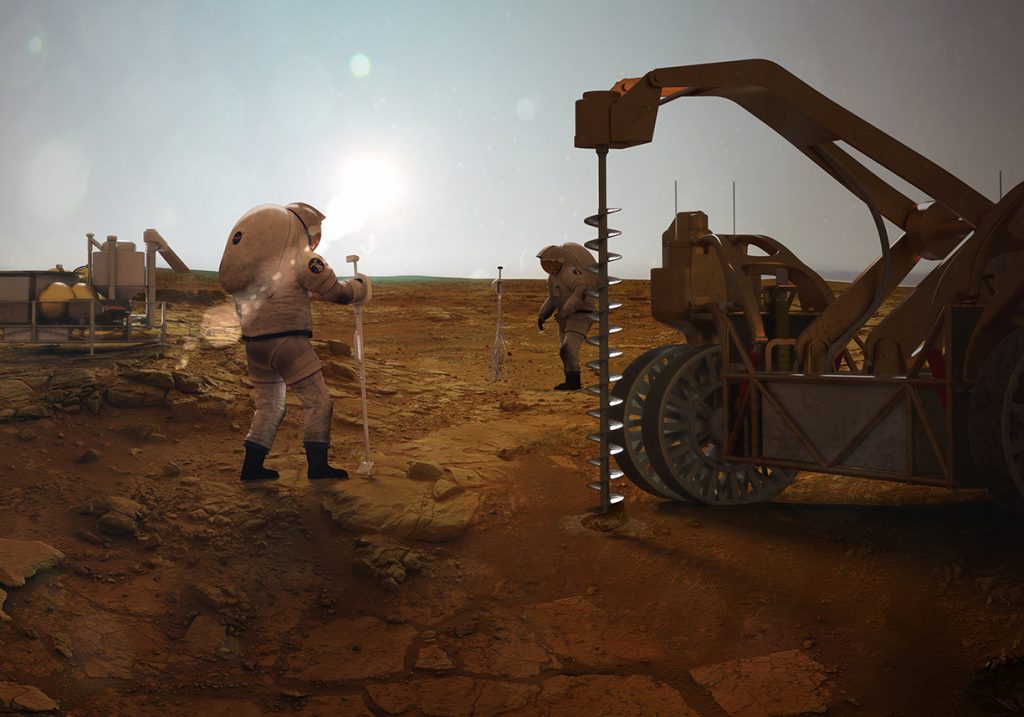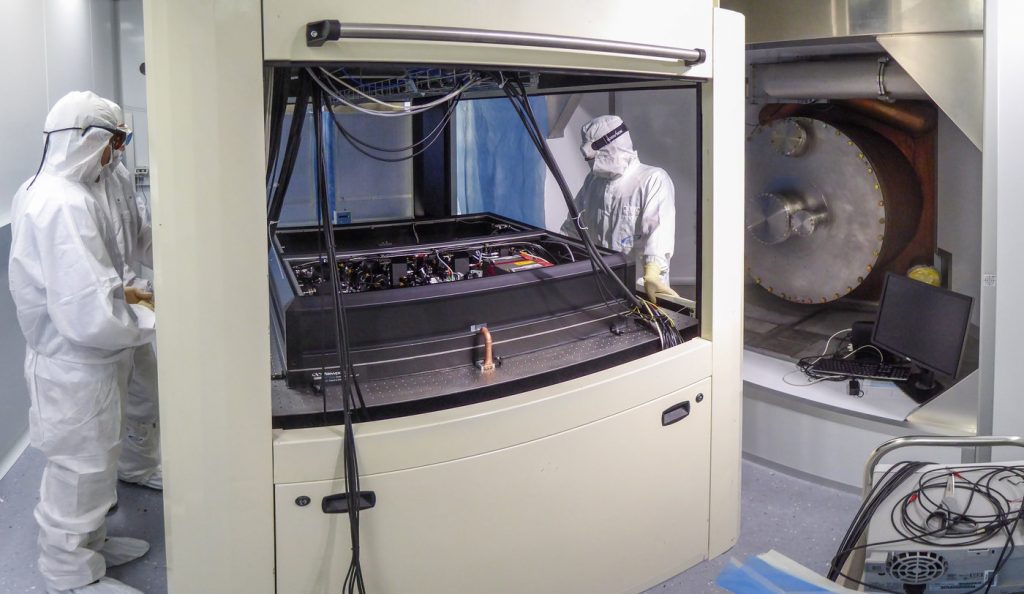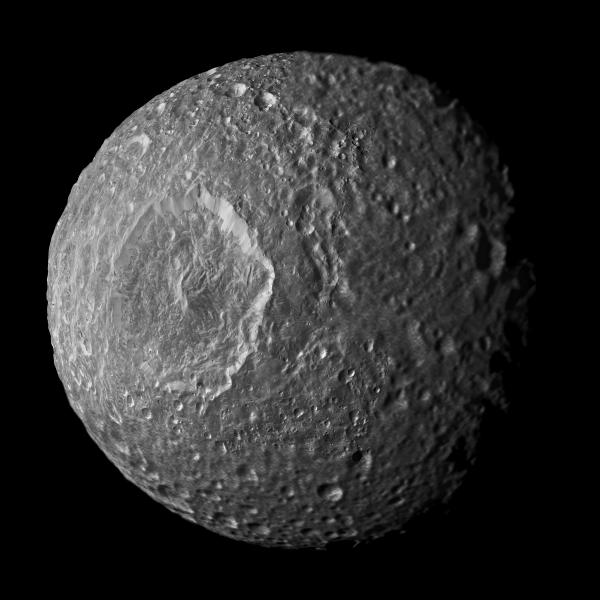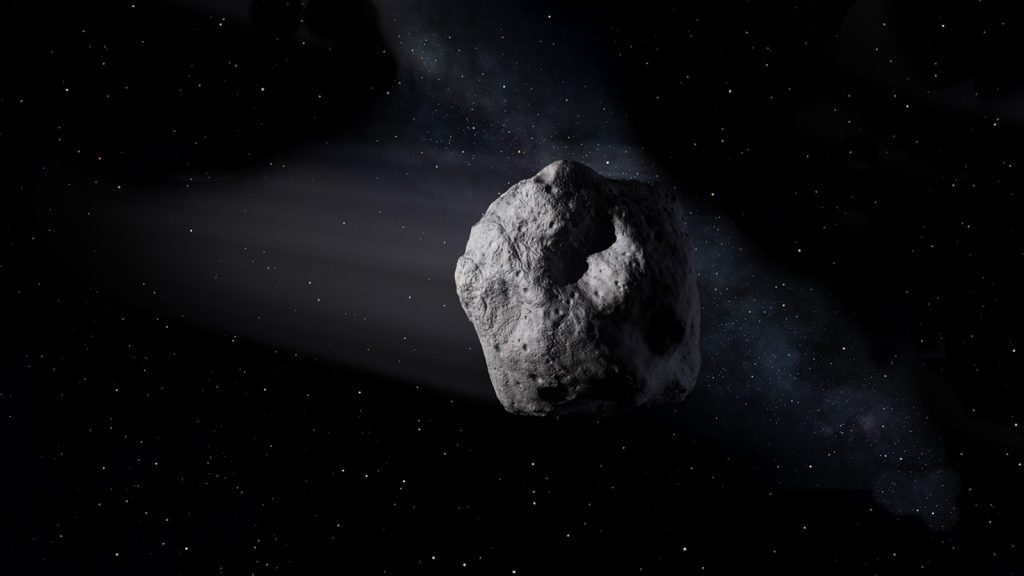Media
Transcript
In today’s top story, we have an update on the Event Horizon Telescope’s observations of the supermassive black hole in the core M87.
In 2019, an amazing image of the glowing material and bent light twisting around this 6.5 billion solar mass black hole was released. That now-iconic image was the result of one week of observations from April 2017 and used telescopes at seven different sites. That one observing run built on the successes of four prior observing sessions that were at a lower resolution but that were, nonetheless, good enough to capture some highlights of what was happening.

And by highlights, I literally mean that these earlier images were able to capture the changing position of the hot spot in the ring. According to Thomas Krichbaum, a researcher on this project: The data analysis suggests that the orientation and fine structure of the ring vary with time. This gives a first impression on the dynamical structure of the accretion flow, which surrounds the event horizon. Studying this region will be crucial for a better understanding of how black holes accrete matter and launch relativistic jets.
These results are published in a new paper in The Astrophysical Journal with first author Maciek Wielgus. The press release related to this story explains: The gas falling onto a black hole heats up to billions of degrees, ionizes, and becomes turbulent in the presence of magnetic fields. Since the flow of matter is turbulent, the ring brightness appears to glitter with time, which challenges some theoretical models of accretion.
As always, the universe is weirder than we expected.
Closer to home, we turn our attention from the new questions about Venus back to figuring out if we can find life on Mars. Researchers at Harvard and the Florida Institute of Technology analyzed the possibility of being able to find life, or evidence of past life, deep underground the surfaces of rocky worlds like Mars and the Moon.

At the surface of those worlds, there is little to no atmosphere, and without that atmospheric pressure, liquid water cannot exist at the surface. However, it has been established that there are subsurface lakes on Mars. Might these be able to sustain life? The answer is a resounding… possibly.
Underground, the rock and soil above can create the pressure necessary to keep H2O in its liquid form. Since we know life on Earth generally needs water and we know there are extremophiles that thrive in very cold environments, the conditions underground could be just right for hosting life. In fact, according to noted Harvard scientist Avi Leob: We found that the biological material limit might be a few percent that of Earth’s subsurface biosphere, and a thousand times smaller than Earth’s global biomass.
While that doesn’t sound like a lot, it’s still detectable. Although, as Florida Tech professor Dr. Manasvi Lingam noted: We know that these searches will be technically challenging, but not impossible.
So for this week, at least, I’m hanging my hopes back on the Percy rover finding evidence for life on Mars, even if it’s only past life.
From Mars, we now return to Earth and return to a story from last July when the Massachusetts Institute of Technology (MIT) LIGO Laboratory announced that they had successfully detected quantum fluctuations in the positions of the roughly 40kg mirrors that are part of the gravitational wave detectors in the US. These jitters in position are just 10^-20 of a meter – an amount 1000s of millions of times smaller than the size of a hydrogen atom – but they are large enough to place a limit on what kinds of gravitational waves can be detected.

In a new paper in Physical Review Letters, Fausto Acernese leads a paper replicating these quantum fluctuation measurements with the Virgo Collaboration in the EU. As these 42kg mirrors jitter, they make it impossible to detect low-frequency gravitational waves. This is because Heisenburg’s Uncertainty Principle forces researchers to make choices on where to put their accuracy. To expand what LIGO and Virgo can observe, new technologies that allow lower frequencies to be seen and that move the quantum noise to higher frequencies will be needed. Currently, frequency-dependent systems that will allow tuning are being developed and initial tests have already taken place. Here is to hoping that in the future we’ll have tunable detectors that allow us to see both different-sized quantum jitters and different frequencies of gravitational waves.
Back out in the wider solar system, our own Planetary Science Institute announced a new timeline for the moons of Saturn. Generally, the age of rocky bodies in our solar system are determined by the cratering rates of the surface – how many craters are on the surface and how often those bodies are hit with impacts big enough to leave those craters. For the Moon and Mars, we know these numbers; however, for the moons of Saturn, we do not. So Institute scientist Sam Bell took a different approach.

First, the accepted theory states that craters on these moons should be caused by objects that orbit the Sun. Second, in accordance with that assumption, is that moons closer to Saturn will show evidence of more cratering due to Saturn’s gravitational pull bringing more objects closer in to hit those moons.
However, Bell found the evidence contradicted that second assumption. He explains: The crater densities of the oldest surfaces of Mimas, Tethys, Dione, Rhea, and Iapetus are all relatively similar. It would be too much of a coincidence for the ages of the oldest surfaces on each moon to vary by the exact amounts necessary to produce broadly similar crater densities. As a result, it seems much likelier that the impactors actually come from objects orbiting Saturn itself, moonlets that would be too small to detect with current technology.
This new chronology changes how we think about the ages of Saturn’s moons. If everything that impacted them had to orbit the Sun, then the moons could not be less than four billion years old. With the impactors now orbiting Saturn, we create room in the chronology for younger moons, which goes along with observations of how their orbits have evolved. And as Bell notes: The assumption of impactors orbiting the Sun results in the conclusion that the surface of Titan is probably at least 4 billion years old, even though Titan shows clear evidence of active weathering. With the new chronology, Titan could be quite young, which is much more consistent with observations of lakes, riverbeds, dunes, and mountains.
Saturn continues to fascinate, and there is still more to learn about this beautiful planet and its system.
This next bit isn’t so much news as it is something cool for you to check out.
Astronomers have been periodically trying to find ways to bring the beauty of the night sky to the visually impaired through a variety of different means. From 3D-printed models to textures being used to denote color to images being translated to sound, a variety of different means have been used.
Data Sonification, which translates colors to notes and intensity to loudness, is one of the more popular ways of presenting astronomy non-visually. A new project combines data from the Chandra X-Ray Observatory, the Hubble Space Telescope, and the Spitzer Space Telescope and translates the information in each set of colors into sounds. In the piece we’re about to play, data from supernova Cassiopeia A is played. As the sonification scans through the image, moving from the center and out toward the edges, sounds represent the position and the brightness of sources in those positions. We will link to this and other sonification videos on our website, DailySpace.org.

Finally, it wouldn’t be 2020 without us mentioning an asteroid. Once again, a near-Earth asteroid was discovered mere days before it safely passed by Earth. This time, the asteroid in question was 2020 SW, and it was found by NASA’s Catalina Sky Survey in Arizona on September 18. It passed by Earth yesterday, September 24, at an incredibly close distance of 22,000 kilometers, which is actually below the ring of geostationary satellites that orbit at 36,000 kilometers.
That’s a little frightening. Don’t be alarmed, though. The asteroid is only the size of a small school bus, about 5 to 10 meters across. It would have broken up in the atmosphere and made a spectacular fireball in the process. Asteroid 2020 SW won’t be back until 2041, and next time, it will be much farther away from Earth.
Learn More
Ring Around M87* Black Hole Shadow Glitters
- Max Planck Institute press release
- “Monitoring the Morphology of M87* in 2009-2017 with the Event Horizon Telescope,” M. Wielgus et al., 2020 Sep. 23, Astrophysical Journal
Could Life Exist Deep Underground on Mars?
- Center for Astrophysics press release
- “Potential for Liquid Water Biochemistry Deep Under the Surfaces of the Moon, Mars, and Beyond,” M. Lingam & A. Loeb, 2020 Sept 21, The Astrophysical Journal Letters
Squeezed Light Makes Virgo’s Mirrors Jitter
- Max Planck Institute press release
- “Quantum Backaction on Kg-Scale Mirrors: Observation of Radiation Pressure Noise in the Advanced Virgo Detector,” F. Acernese et al. (The Virgo Collaboration), 2020 Sep. 22, Physical Review Letters
New Chronology of the Saturn System
- Planetary Science Institute press release
- “Relative Crater Scaling Between the Major Moons of Saturn: Implications for Planetocentric Cratering and the Surface Age of Titan,” Samuel W. Bell, 2020 May 26, Journal of Geophysical Research Planets
Sounds from Around the Milky Way
School-Bus-Size Asteroid to Safely Zoom Past Earth
Credits
Written by Pamela Gay and Beth Johnson
Hosted by Pamela Gay and Beth Johnson
Audio and Video Editing by Ally Pelphrey
Content Editing by Beth Johnson
Intro and Outro music by Kevin MacLeod, https://incompetech.com/music/


 We record most shows live, on Twitch. Follow us today to get alerts when we go live.
We record most shows live, on Twitch. Follow us today to get alerts when we go live.